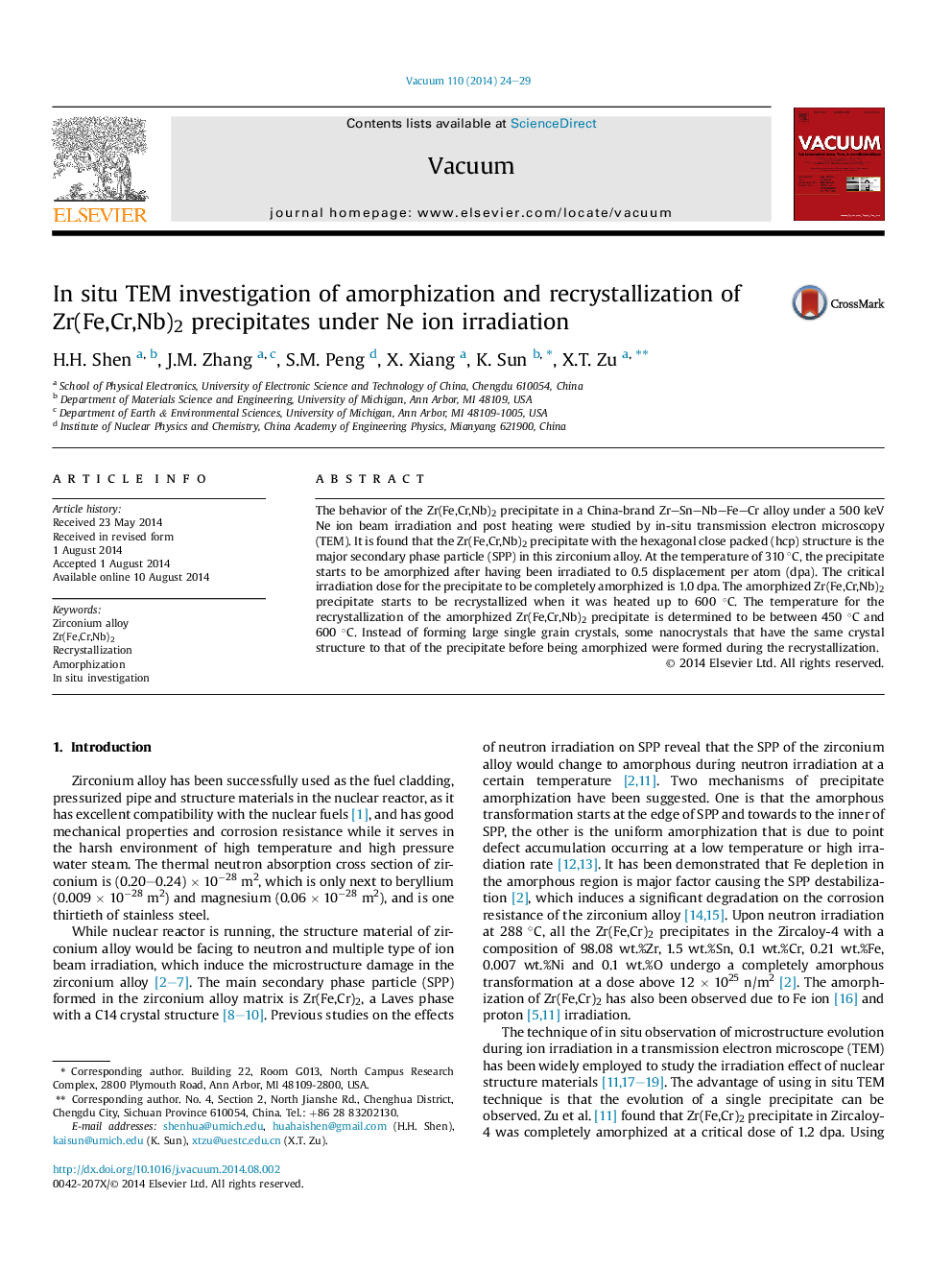| Article ID | Journal | Published Year | Pages | File Type |
|---|---|---|---|---|
| 1689571 | Vacuum | 2014 | 6 Pages |
•The major precipitate is Zr(Fe,Cr,Nb)2 with hcp structure in Zr–Sn–Nb–Fe–Cr alloy.•Behaviors of Zr(Fe,Cr,Nb)2 in Zr–Sn–Nb–Fe–Cr due to Ne+ irradiation were studied.•The critical Ne+ irradiation dose for Zr(Fe,Cr,Nb)2 to be amorphized is 1.0 dpa.•Recrystallization temperature for amorphized Zr(Fe,Cr,Nb)2 is around 600 °C.•Nanocrystals are formed in amorphized Zr(Fe,Cr,Nb)2 during the recrystallization.
The behavior of the Zr(Fe,Cr,Nb)2 precipitate in a China-brand Zr–Sn–Nb–Fe–Cr alloy under a 500 keV Ne ion beam irradiation and post heating were studied by in-situ transmission electron microscopy (TEM). It is found that the Zr(Fe,Cr,Nb)2 precipitate with the hexagonal close packed (hcp) structure is the major secondary phase particle (SPP) in this zirconium alloy. At the temperature of 310 °C, the precipitate starts to be amorphized after having been irradiated to 0.5 displacement per atom (dpa). The critical irradiation dose for the precipitate to be completely amorphized is 1.0 dpa. The amorphized Zr(Fe,Cr,Nb)2 precipitate starts to be recrystallized when it was heated up to 600 °C. The temperature for the recrystallization of the amorphized Zr(Fe,Cr,Nb)2 precipitate is determined to be between 450 °C and 600 °C. Instead of forming large single grain crystals, some nanocrystals that have the same crystal structure to that of the precipitate before being amorphized were formed during the recrystallization.
